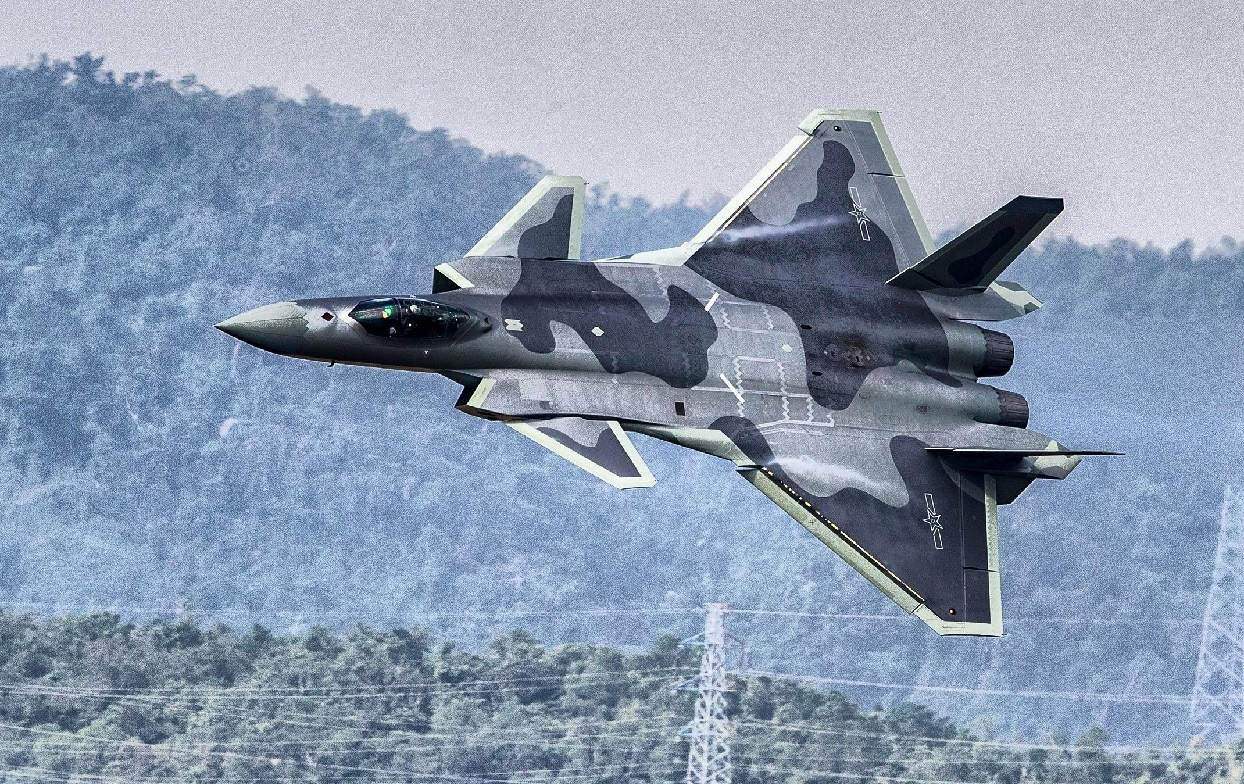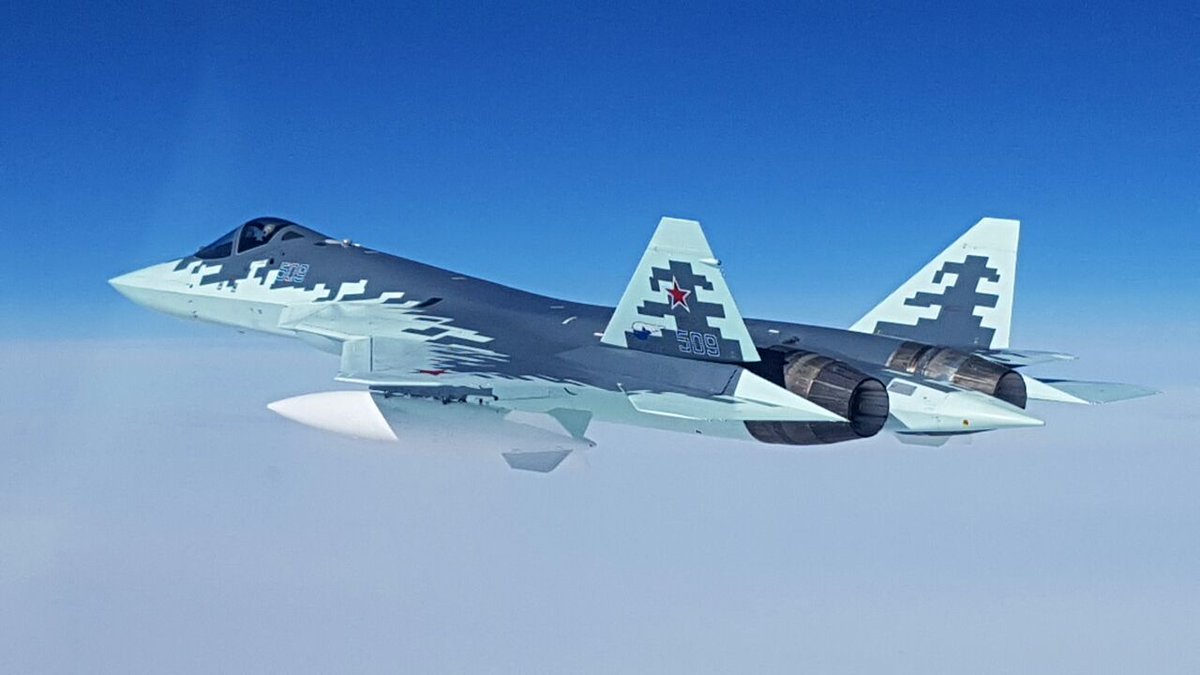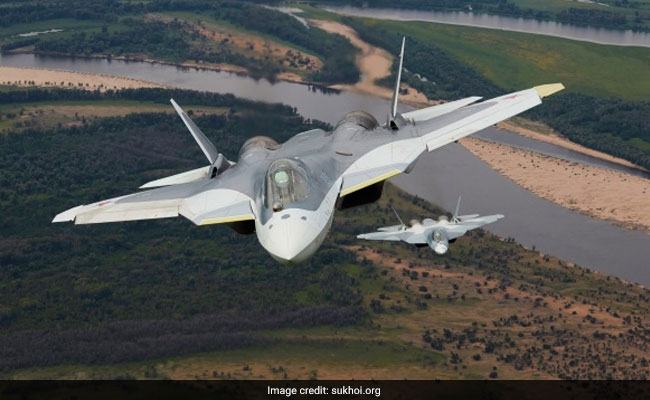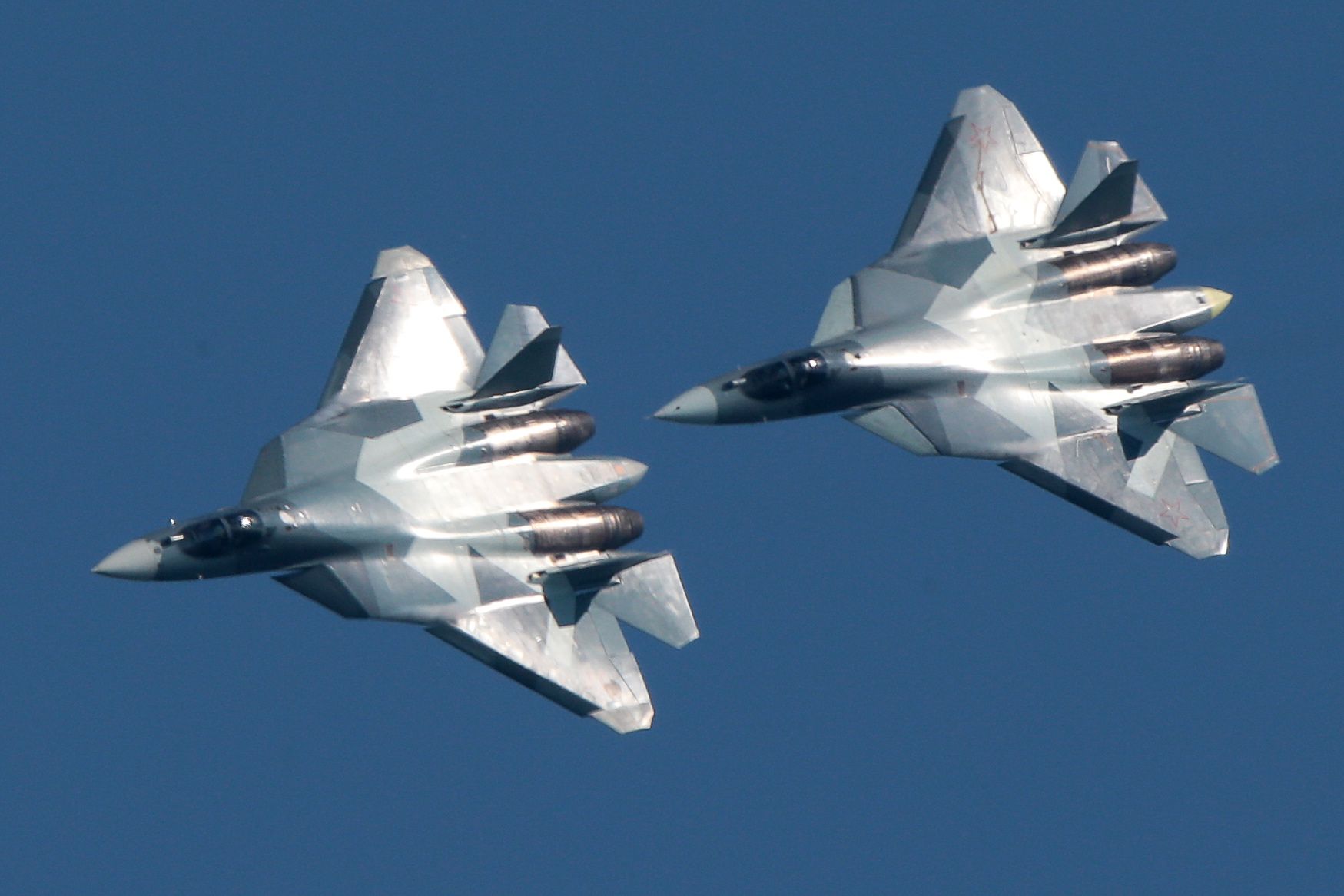Russian 5th Generation Fighter Jets - It is a derivative of the PAK FA (Russian: ПАК ФА, short for: Перспективный авиационный комплекс фронтовой авиации, roman: Перспективный авиационный комплекс фронтовой авиации, roman: Aviation Frontiii, Peratition Introduced in 1999 as an option another more modern and affordable alternative to the MFI (Project Mikoyan 1.44 / 1.42) Stealth is the basis for a family of fighter jets.
A multi-role fighter capable of air combat as well as ground and sea strikes, the Su-57 features stealth, supermaneuverability, supercruise, integrated avionics and a large internal payload capacity.
Russian 5th Generation Fighter Jets

The MiG-29 and Su-27 aircraft are expected to succeed in Russian military service and have also been marketed for export. The first prototype aircraft was flown in 2010, but the program would experience long development due to various structural and technical problems encountered during testing, including the destruction of the first production aircraft in accident before delivery. After several delays, the first Su-57 entered service with the Russian Aerospace Forces (VKS).
Putin Inspects New Russian Fighter Jet Unveiled At Air Show
In 1979, the Soviet Union identified the need for next-generation fighters for ter service in the 1990s. This program became the I-90 (Russian: И-90, abbreviated: Истребитель 1990–х годов, lit. 'Fighter of the 1990s') and the fighter had to be "multifunctional" ( i.e., multiple roles) with solid ground. attack capability, and will replace the MiG-29 and Su-27 in frontal tactical aircraft. Two later projects were created to meet these requirements: the MFI (Russian: МФИ, abbreviated: Многофункциональный фронтовой истребитель, lit. 'Multifunctional Frontline Fighter') and the short concept Frontline Fighter'L 9 ), and 1.
Although not involved in the MFI, Sukhoi began its own program in 1983 to develop technology for next-generation fighter aircraft, which led to the S-32 advanced wing experimental aircraft, later renamed the S-37 and the Su-47. Due to a lack of funding after the breakup of the Soviet Union, MFI was delayed again and the first flight of the MiG 1.44 / 1.42 prototype did not take place until 2000, nine years later.
Due to high costs, the MFI and the LFI were completely canceled, while the Russian Ministry of Defense began work on the next generation fighter program; In 1999, the ministry launched the PAK FA or I-21 program, the competition was announced in April 2001.
Due to Russia's financial constraints, the program aimed to contain costs by producing a single multirole fifth-generation fighter to replace both the Su-27 and MiG-29. Other cost-saving measures include the indented size between the Su-27 and MiG-29 and the MiG MFI's 28.6 tons (63,000 lb) and Su-47's 26.8 tons (59,000 lb).
Amazon.com: Zvezda Zve4824 1:48 Su 57 Felon Russian Fifth Generation Fighter [model Building Kit]
Sukhoi's approach to the PAK FA competition was completely different from Mikoyan's; Mikoyan proposed collaborating as a team with the winning team leading the design effort for all three design bureaus (Mikoyan, Sukhoi and Yakovlev), while Sukhoi's proposal was the lead designer from the start and giving its - enter a cooperation agreement. From tire development and production cycles, propulsion and avionics suppliers to research facilities. In addition, the two companies had different design philosophies for the aircraft. E-721 Mikoyan was smaller and cheaper, with a typical weight of 16–17 tons (35,000–37,000 lb) and was powered by a pair of Klimov VK-10M engines of 10–11 tons (98.1–108 N) , 22,000-24,300 lbf) of thrust each. In contrast, the Sukhoi T-50 would be relatively larger and more capable, with a typical target weight of 22–23 tons (49,000–51,000 lb) and powered by a pair of Lyulka-Saturn AL-41F1 engines each . 14.5-ton (142 kN, 32,000 lbf) maximum thrust in class.
In April 2002, the Ministry of Defense selected Sukhoi over the Mikoyan as the winner of the PAK FA competition and the lead design bureau for the new aircraft.
In addition to the quality of the proposal, attention was paid to Sukhoi's experience in the 1990s, with the successful development of several Su-27 derivatives and several exports ensuring financial stability.

Mikoyan continued to develop his E-721 as the LMFS (Russian: ЛМФС, abbreviated: Лёгкий многофункциональный фронтовой Фотов, lit. 'lightline frontcraft' multifunction).
Sukhoi Su 57, The Russian Most Advanced Fifth Generation Fighter Aircraft
PAK FA's research and development program is called Stolitsa (Russian: Столица, lit. 'Capital city'). In 2002, Alexander Davydko was selected as the chief designer of the T-50 at Sukhoi.
The Novosibirsk Aircraft Production Association (NAPO) and the Komsomolsk-on-Amur Aircraft Production Association (KnAAZ) will build the new multi-role fighter, with KnAAZ performing final assembly at Komsomolsk-on-Amur.
After the competition in 2003, Tekhnokompleks Scientific and Production Cter, Ramskoye Instrument Design Building Bureau, Tikhomirov Scientific Research Institute for Instrument Design (NIIP), Ural Optical and Mechanical Plant (UOMZ) in Yekaterinburg, Polet Firm in Nizhny Novgorod . And the Central Scientific Research Radio Engineering Institute in Moscow was chosen to develop the PAK FA's avionics suite. In April 2004, NPO Lyulka-Saturn (now NPO Saturn) was signed as the contractor for the AL-41F1 Jins with the development designation izdeliye 117.
Sukhoi used the existing airframes as test beds for various subsystems and concepts; The Su-47 tested internal weapons and was a test bed for the Su-27M prototype flight control system and genes.
Russia's Fifth Generation Fighter Ambitions Chart
To reduce development risk and spread related costs, as well as to close gaps with existing fourth-generation fighters, Sukhoi applied some technologies and features of the T-50, such as propulsion and some avionics , to an advanced product of the Su-50. . The 27 is known as the T-10BM (Russian: БМ, abbreviated: Большая Моднержания, lit. 'Major Modernization'), purchased by the Russian Ministry of Defense in 2009 and decommissioned in 2009 as the Su-3.
In December 2004, the conceptual design and dimensions of the T-50 were completed and approved by the Ministry of Defense; Government funding for the program began in 2005 and increased significantly in 2006 when detailed planning was underway.
On August 8, 2007, Russian news agencies reported that the head of the Russian Air Force Alexander Zelin said that the development phase of the program had been completed and that the construction of the first aircraft for flight testing would begin, with three flights T-. 50 prototypes designed. Built in 2009.
)
From the early stages of the PAK FA program, Russia sought foreign partnership on the project to increase funding for its development and secure large export orders.
Rostec To Unveil Export Version Of Su 57 Fifth Generation Fighter At Army 2020 Forum
On 18 October 2007, Russia and India signed an agreement for Sukhoi and Hindustan Aeronautics Limited (HAL) to jointly develop a derivative of the PAK FA known as the FGFA.
In September 2010, India and Russia agreed on an initial planning agreement where each country was to invest $6 billion; A memorandum of understanding for the preliminary design was signed in December 2010 and development of the FGFA was expected to take 8-10 years.
By 2014, however, the Indian Air Force began to express concerns about performance, costs and division of labour. India left the partnership in 2018.
Med flights of the T-50 were canceled again from early 2007 after encountering unspecified technical problems. In August 2009, Alexander Zelin admitted that the problems in genetic and technological research had not yet been resolved.
Russia Unveils New 'checkmate' Fighter Jet
On 28 February 2009, Sukhoi Geral director Mikhail Pogosyan announced that the airfield was almost complete and that the first prototype would be ready by August 2009.
On August 20, 2009, Pogosyan said that the date of the first year of flight. Konstantin Makiko, deputy head of the Ctre for Analysis of Strategies and Technologies, based in Moscow, said that the plane would make its first flight by January or February "in case of delays ”, and that commercial production would take five to t years. .
Flight tests were further delayed after Deputy Prime Minister Sergei Ivanov announced in December 2009 that the first tests would begin in 2010.

The first taxi test was successfully completed on 24 December 2009 and the first T-50-1 prototype aircraft made its first flight on 29 January 2010.
First Photos Emerge Of Russia's New 5th Gen Fighter
Piloted by Sukhoi test pilot Sergei Bogdan, the aircraft's 47-minute med flight took place at KnAAPO's Zemgi Airport in the Russian Far East.
The construction of the prototype will be slower than originally expected; As of October 2013, the test program had flown more than 450 flights from five aircraft.
A total of T-flights and three non-flying T-50 prototypes will be built for preliminary flight tests and state trials.
Initially, the program planned to have six prototypes before series production began; But tests would show that the early prototypes did not have enough fatigue, and early structural cracks formed in the airframe.
Up Close And Personal With Russia's 5th Generation Stealth Fighter: First Close Up Pictures Of The Pak Fa
The aircraft was subsequently structurally redesigned, including the use of more composite materials, a reinforced airframe to meet full life cycle requirements, a longer tail "sprit" and wingspan slightly larger; The sixth flyable prototype was the first "second stage" aircraft to be redesigned, as a result the original five prototypes were considered "first stage" vehicles and required additional structural strengthening to continue flight tests.
The last two flying prototypes were test articles for production Su-57 aircraft with complete mission systems.
A "second stage" structural retrofit reduced the weight gain from the required reinforcement

Generation 5 fighter jets, fourth generation fighter jets, 5th generation fighter jets, russian fighter jets sale, 4th generation fighter jets, fifth generation fighter jets, generation of fighter jets, indian 5th generation fighter jets, 5th generation russian fighter jet, top 5th generation fighter jets, 5th generation russian fighter, 6th generation fighter jets
0 Comments